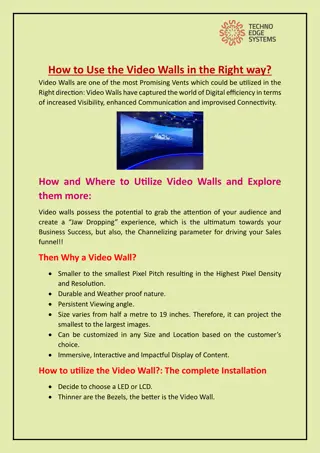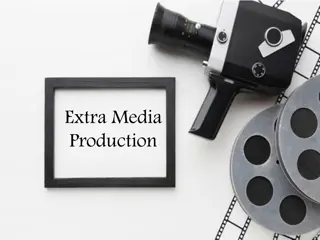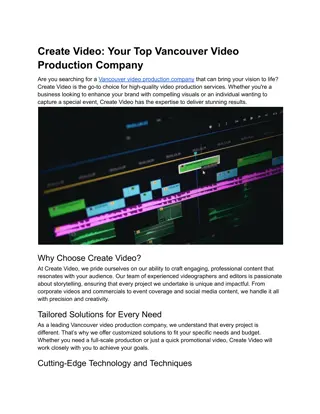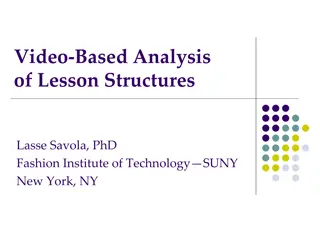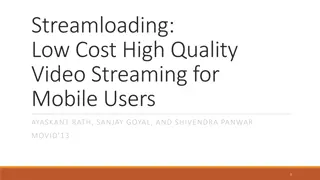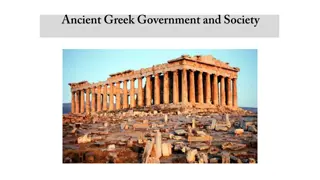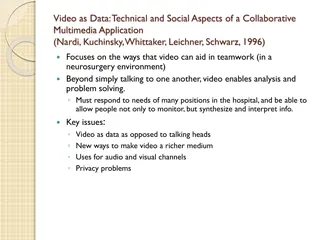Understanding the Elements of Video in Documentaries
Explore the essential components of video production in documentaries, including real-life explorations, physical and content qualities, and examples from popular documentaries like Fat, Sick, and Nearly Dead. Learn how elements such as music, visuals, interviews, and narration are utilized to convey information and evoke specific tones and moods. Dive into the world of documentary filmmaking to understand how filmmakers deliver central messages and engage audiences effectively.
Download Presentation

Please find below an Image/Link to download the presentation.
The content on the website is provided AS IS for your information and personal use only. It may not be sold, licensed, or shared on other websites without obtaining consent from the author. Download presentation by click this link. If you encounter any issues during the download, it is possible that the publisher has removed the file from their server.
E N D
Presentation Transcript
ELEMENTS OF VIDEO IN DOCUMENTARIES 3-D Learning
DOCUMENTARIES Real life explorations of an issue, topic, person, or event Not scripted, other than narration or interview questions Provide background, information, and analysis
PHYSICAL QUALITIES Music, visuals, interviews, etc. Creates tone and mood How are these elements represented in the film to portray information?
EXAMPLE: FAT, SICK, AND NEARLY DEAD Watch the following clip from Fat, Sick, and Nearly Dead Cells, Fruits, and Vegetables How does this clip use physical elements to portray information to the audience? Animation: Visualizes narration in an entertaining format Text and visuals: Showcase data and statistics Sound effects: Create auditory interest to match animation visuals Mood and Tone: Upbeat, non-threatening, and informational
OTHER PHYSICAL QUALITIES Clip shots: Still images or non-action footage Observational footage: Think Real World style footage Archive footage: Video retrieved from personal or government archives Process footage: Video of the process of creating the film; Think Super Size Me Dramatizations: Reenactments of events; usually narrated Interviews: Provide background, analysis, and expertise on an issue, event, or person
CONTENT QUALITIES Central Message: What is the film maker trying to say or argue about a topic? Super Size Me: Fast Food chains contribute to the declination of the nation s health Food, Inc.: Commercial farming practices are unregulated and have environmental and human health impacts Film-maker Bias: Does the film-maker have a clear bias on the topic? Michael Moore: Typically criticized for a radically liberal bias in his films Audience Response: What does the film-maker want the audience to feel or do after watching the documentary?
ASSIGNMENT Find a documentary to watch (at least 1 hour) and complete the Documentary Film Analysis Worksheet from Moodle. Fill out all parts. Email completed to dmclean@p12fwps.org by 11:59 PM for attendance credit



